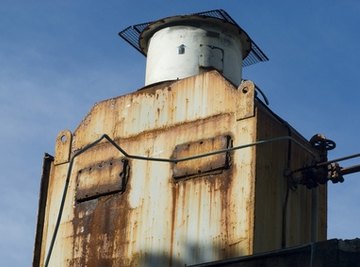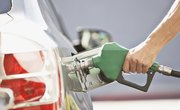
Refrigerants are the fluids or gases contained in refrigerating devices, which boil or expand, removing heat from objects to be cooled, then compressed, transferring heat to cooling mediums such as water and air. Refrigerants used in commercial heating, ventilating and air conditioning (HVAC), and in home air conditioning units include hydrofluorocarbons (HCFCs), chlorofluorocarbons (CFCs) and perfluorocarbons (PFCs). National governments are concerned with refrigerant properties because of evidence linking emissions of some of the gases to the depletion of the Earth's ozone layer. Others function as greenhouse gases, trapping heat within the atmosphere, and therefore have high global warming potential. The U.S. Clean Air Act regulates emissions from systems that use refrigerant gases. Refrigerants are ranked in 13 property classes, including a flammability class that has three sub-classes.
Refrigerant Flammability Classes
Class 1 refrigerants are either non-combustible or, at 70 degrees F and 14.6 psi (room temperature and sea-level atmospheric pressure), do not support the spread of a flame in a combustible environment of the gas outward from the point of ignition. Refrigerants in this class are considered the safest. Class 2 refrigerants have a lower flammability limit of more than 0.00624 lb./cubic foot (0.10kg/cubic meter) at 70 degrees F and 14.6 psi, and a heat of combustion less than 19 kilojoules/kilogram. Class 3 refrigerants are highly flammable with a lower flammability limit of less than or equal to 0.00624 lb./cubic foot (0.10 kg/cubic meter) at 14.6 psi and 70 degrees F, or a heat of combustion greater than or equal to 19 kilojoules/kilogram.
Flammability Class I
Examples of class 1 refrigerants are helium (He), neon (Ne), nitrogen (N), water, air, carbon dioxide (CO2), sulfur dioxide (SO2), carbon tetrachloride (CCl4), trichloromonofluoromethane (CCL3F) and carbon tetrafluroide (CF4).
Flammability Class 2
Examples of class 2 refrigerants are ammonia (NH3), ethane (C2H6), propane (C3H8), iso-butane (iC4H10), Methyl chloride (CH3CL), acetic acid (CH3COOH) and dichloromethane (CH2CL2).
Flammabilty Class 3
Class 3 refrigerants are hydrogen (H2), methane (CH4), butane (C4H10), trifluromethane (CHF3), pentafluroethane (C2HF5), chlorodifluromethane (CHClF2), tetrafluroethane (CF3CH2F) and difluroethane (CHF2CH3).
References
About the Author
A Toronto native, Michael Merry began writing on health and fitness in 2010. He contributes to LIVESTRONG.COM, eHow, and Answerbag.com. Merry has an extensive background in chemical and metallurgical research, physics, nuclear radiation analysis, and associated technologies. He is an avid amateur astronomer, accomplished chess player, and a health and fitness enthusiast. Michael holds a Bachelor of Technology from Ryerson University.
Photo Credits
old rusted cooling unit from a refrigeration plant image by Stephen Gibson from Fotolia.com
